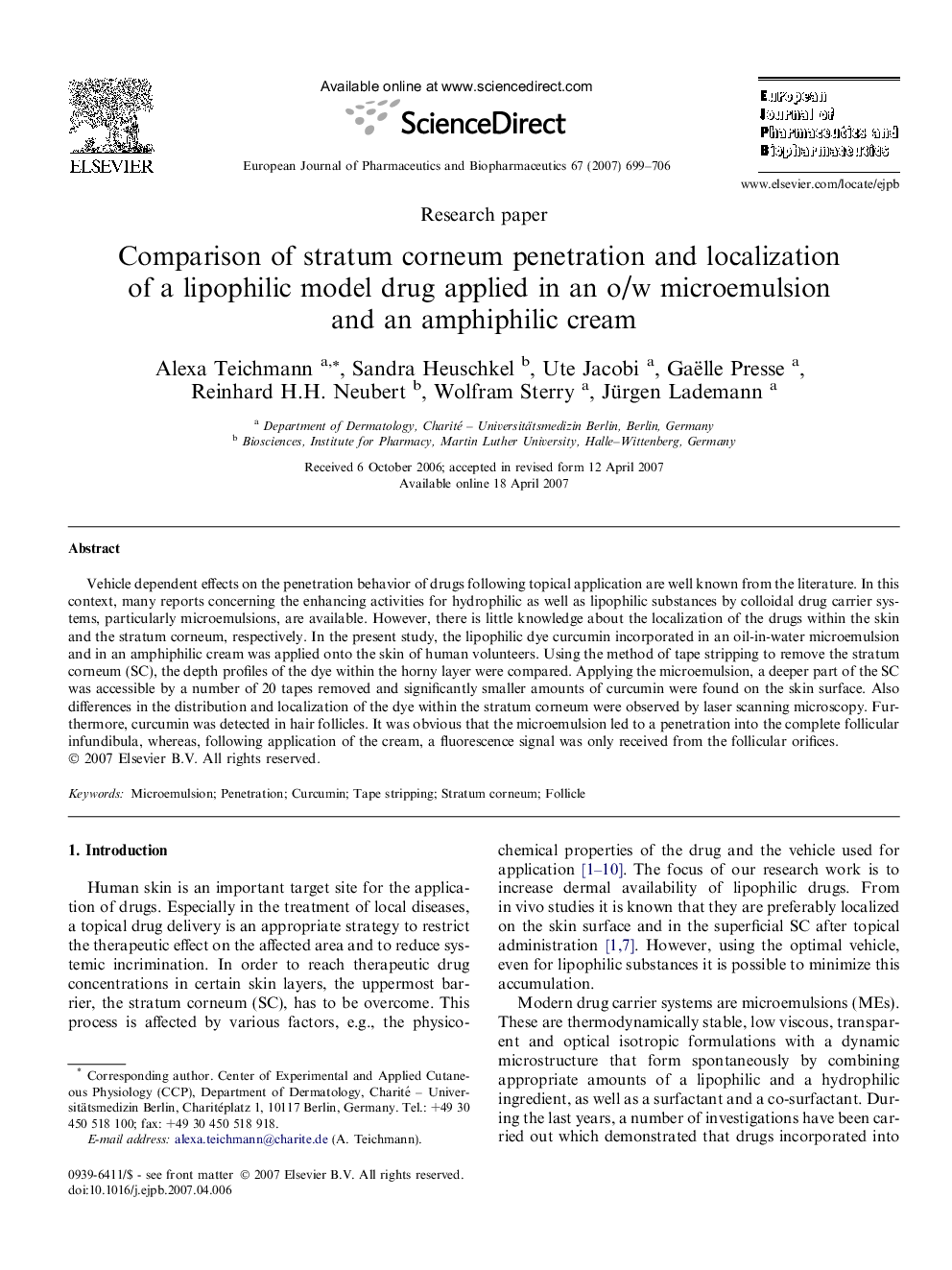| Article ID | Journal | Published Year | Pages | File Type |
|---|---|---|---|---|
| 2085707 | European Journal of Pharmaceutics and Biopharmaceutics | 2007 | 8 Pages |
Vehicle dependent effects on the penetration behavior of drugs following topical application are well known from the literature. In this context, many reports concerning the enhancing activities for hydrophilic as well as lipophilic substances by colloidal drug carrier systems, particularly microemulsions, are available. However, there is little knowledge about the localization of the drugs within the skin and the stratum corneum, respectively. In the present study, the lipophilic dye curcumin incorporated in an oil-in-water microemulsion and in an amphiphilic cream was applied onto the skin of human volunteers. Using the method of tape stripping to remove the stratum corneum (SC), the depth profiles of the dye within the horny layer were compared. Applying the microemulsion, a deeper part of the SC was accessible by a number of 20 tapes removed and significantly smaller amounts of curcumin were found on the skin surface. Also differences in the distribution and localization of the dye within the stratum corneum were observed by laser scanning microscopy. Furthermore, curcumin was detected in hair follicles. It was obvious that the microemulsion led to a penetration into the complete follicular infundibula, whereas, following application of the cream, a fluorescence signal was only received from the follicular orifices.
